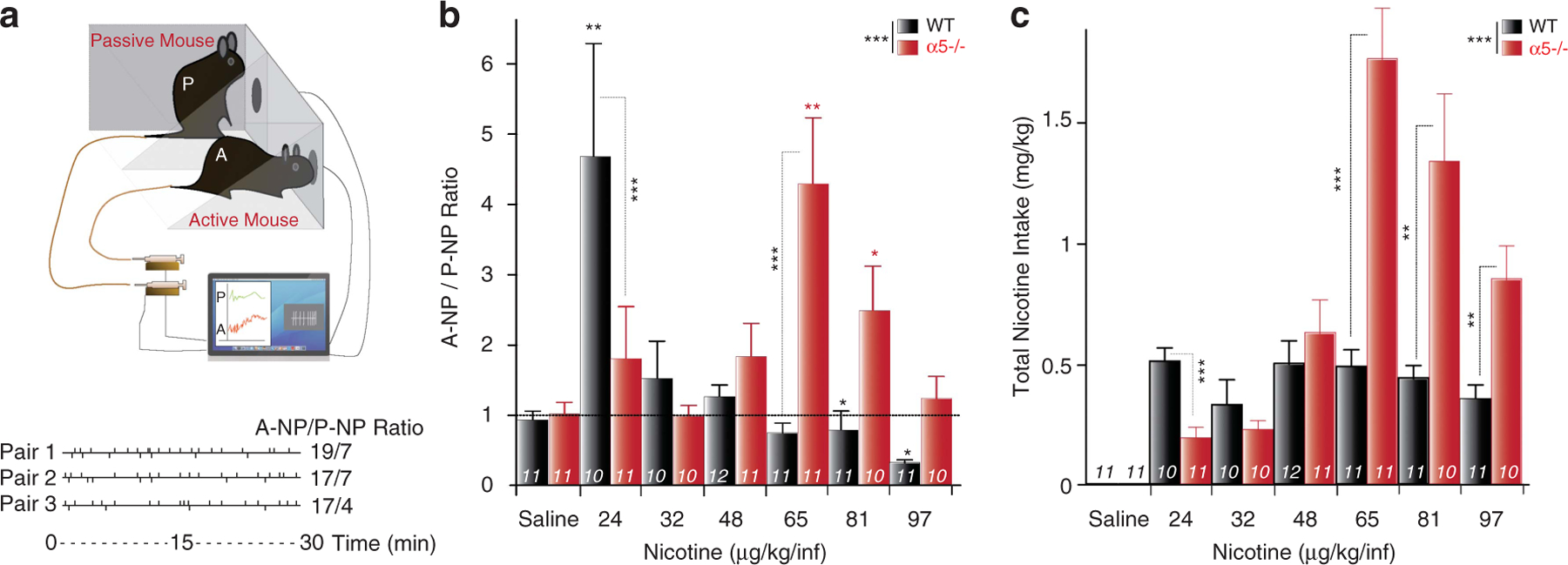Figure 1.

Critical role of the α5 subunit in intravenous self-administration task (IVSA). (a) IVSA set-up. Top: Scheme of the set-up for the intravenous self-administration task (IVSA). Mice are tested in pairs. The active mouse (A) is tested for nicotine reinforcement, the passive mouse (P) is used as a control mouse. Each nose poke (NP) of the A mouse activates a computer-operated syringe pump that delivers a nicotine injection into the tail vein of both the A and the yoked P mouse. Bottom: Event records from three representative paired mice during nicotine IVSA sessions. The vertical deflections above the horizontal line mark the time of each individual NP of the active mouse (A-NP), whereas each deflection below the line represents NP of the passive mouse (P-NP), over the 30-min experimental session. (b, c) α5−/− mice shift to higher doses in IVSA. (b) Mean ± s.e.m. A-NP/P-NP ratio for wild-type (WT; black) and α5−/− (red) mice self-administering different nicotine concentrations (μg kg−1 per infusion). (c) Mean ± s.e.m of total nicotine intake (mg kg−1) by A mice. ***P<0.001 WT vs α5−/−, analysis of variance (ANOVA). *P<0.05, **P<0.01 vs yoked P mice, Student t-test. Number of mice tested is indicated for each group.
